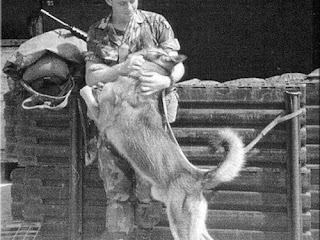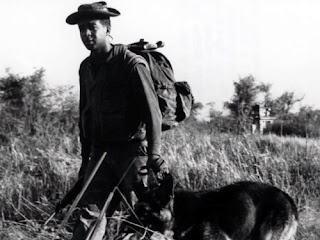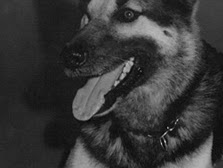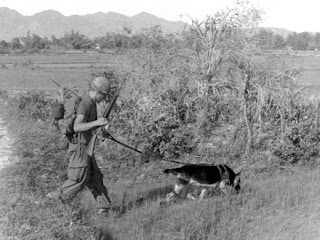American agression! Tan Dinh Island, Mekong Delta, Vietnam, 1965 (Image by Huynh Thanh My)
The war that was fought in South Vietnam was unlike any other experienced by American forces up to that time. Whereas the Korean War had been to all intents a conventional war on the ground, the war in South Vietnam became a “war with no front” where guerrilla fighters could not be distinguished from the local populace who might, in fact, have been guerrilla fighters. The US found itself at war with an enemy that could disappear within minutes of an attack, one that might appear at any moment on a patrol or not at all. All this was very debilitating for any US soldier out on patrol and was used to explain why massacres of innocents did take place such as the one at My Lai in 1968.
(Image: Terry Fincher) American soldiers in Vietnam. 1968



The NLF had learnt its tactics from the Chinese Communists who had perfected the art of guerrilla warfare against both the forces of Chiag Kai-shek and during World War Two against the Japanese. Mao Zedong had specifically explained to his followers that there was a two-fold approach to guerrilla warfare – fighting the enemy and befriending the local population to get their acceptance and support. There can be little doubt that the North Vietnamese succeeded in the latter as President Kennedy acknowledged in the early days of the Vietnam War that large areas of South Vietnam were sympathetic to the NLF and that guerrillas in the South were willing to fight with the NLF to defeat the Americans.

The South became a classic fighting ground for guerrilla warfare. The jungles or the river deltas such as the Mekong gave the guerrillas fighting for the North huge advantages over the Americans. US patrols were under constant psychological pressure that each step might be the last for a young US soldier. Known patrol routes were ridden with booby traps such as the infamous ‘Bouncing Betty’ or the punji traps that were found by the thousand on routes used by the US military. Known patrol routes could be booby trapped with the aforementioned punji traps or trip wires attached to a grenade or mined etc. Whatever was used, it had a debilitating impact on many US soldiers. What could not be known was if a patrol route was, in fact, booby-trapped. Many were not – but American patrols were not to know this. Guerrilla warfare was such that the unknown was often more difficult to handle than the known.

The VC and NLF also had the major added advantage of knowing the lay of their land. This meant that they had the knowledge to build, for example, 250 kilometres of tunnels in the South safe in the knowledge that some might be found but the majority would be functional to the detriment of the US.
 Image
ImageInitially the American strategy to countering the NLF and VC was to build a system of heavily fortified supply bases from which patrols could operate. These patrols were frequently sent out near to the Ho Chi Minh Trail to disrupt movement along it. Khe Sanh was one such base. Heavily protected around the perimeter and capable of being supplied by air, it acted as a base for patrols near to the 17th Parallel. These large bases also acted as supply bases for smaller strongholds located away from the likes of Khe Sanh. However, these bases had one major disadvantage – they were static and open to attack. At Khe Sanh, for example, the North Vietnamese were quite capable of getting to the outer perimeters of the base seemingly at will.

US troops were expected to patrol in towns, villages, delta regions, paddy fields that were found throughout the South and in jungles and the bush. The climate alone could be a major drain on a soldier’s physical capabilities let alone the fact that he was searching for an enemy.
“It is a terrible country for fighting. The jungle trees and vines that cover the sharp ridges and deep valleys in the mountains make military movement difficult.”
“The heat and rain and insects were almost worse than the enemy. Drenched in sweat, the men waded through flooded paddies and plantations, stopping from time to time to pick leeches out of their boots.” (S. Karnow)

The US used armoured personnel carriers where they could but this was not always easy in South Vietnam. The M1 13 could travel in water as well as on land and it gave good protection to those it carried – but ultimately it could not be used everywhere in South Vietnam.

The majority of US troop movement in South Vietnam was via helicopter. Helicopters allowed for the swift and accurate deployment of troops to where they were required. Helicopters were also used to remove the wounded from a battle zone. The very geography of South Vietnam made troop movement difficult at best and the easiest way to overcome this was to use helicopters. By the time American pulled out of South Vietnam, they had lost over 2,200 helicopters in battle.


Countless Vietnam War Veterans have recalled the sheer hostility of the environment they were required to fight in. This was combined with the knowledge that they were fighting what was effectively an unseen enemy.
“Without uniform, it is difficult to tell a Vietcong fighter from a loyal South Vietnamese (especially when the ‘loyal’ Vietnamese is a VC sympathiser).”
“You kill because that little SOB is doing his best to kill you and you desperately want to live, to go home, to get drunk or walk down the street on a date again.”





































